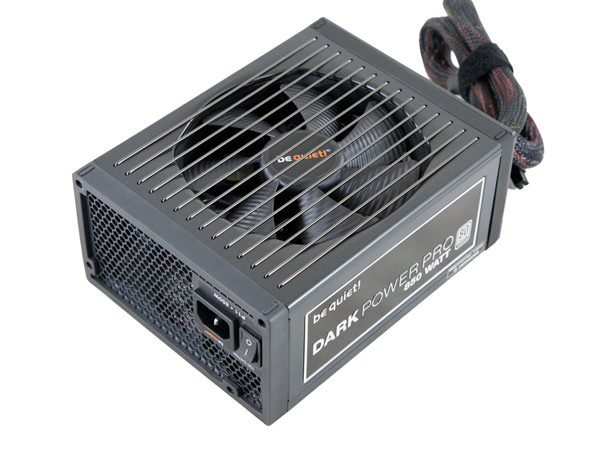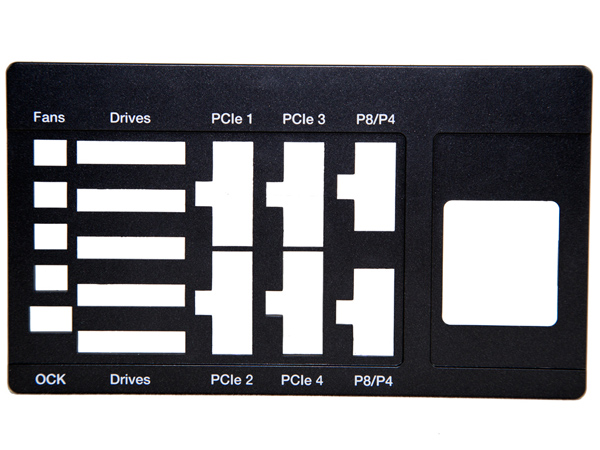Early Verdict
A high-performance PSU that is the most silent unit we have ever tested (passive PSUs excluded). FSP's cooperation with be quiet! has delivered an excellent product that will please all noise haters.
Pros
- +
• Full power at 46°C • Performance • Japanese caps • Silence • FDB fan • OCK feature • External Fan control • Lots of connectors
Cons
- -
• Price • 5VSB efficiency • No stealth or flat cables
Why you can trust Tom's Hardware
Introduction
You might have guessed that be quiet!’s mission is to offer products that output the lowest possible noise, even under tough conditions. The company has a long history of making PSUs, and its products are popular in Europe, especially among German users who prefer hardware that operates silently. be quiet! also offers silent cooling solutions, and recently entered the PC case market.
Until now, the Dark Power Pro 10 series comprised be quiet!’s flagship PSUs, but the competition continues to improve, especially at the high end. The new series lists three models with capacities ranging from 850 to 1200W. be quiet! tells us it will have three mid-capacity models (in the 550 to 750W range) in August. Interestingly, with this series, be quiet! returns to FSP, rather than Seasonic, for manufacturing.
We put the 850W model to the test. It is equipped with a 135mm SilentWings 3 fan developed exclusively for use in PSUs, which is worth mentioning because most PSUs use general-purpose fans, some of which aren’t well suited for the purpose. For example, the popular sleeve-bearing fans that we find in most affordable PSUs aren’t suitable for horizontal mounting, and their lifetime is greatly reduced inside of PSUs where they're usually mounted horizontally.
The Dark Power Pro PSUs feature an overclocking key, carried over from the previous generation. This key is actually a simple switch (or a jumper) that converts the PSU from a multi-+12V rail unit, as it comes from the factory, to one with a single +12V rail. This feature eliminates any problems that may arise from triggering overcurrent protection (OCP) once you begin overclocking power-hungry graphics cards. In most cases, GPUs and CPUs consume power voraciously under extreme overclocks, which is why most professional overclockers use high-output PSUs.
Specifications
Efficiency in the Dark Power Pro 11 is 80 PLUS Platinum-rated, and the unit is Haswell-ready since it has DC-DC converters for generating the minor rails. It can deliver its full power continuously at an ambient temperature of up to 50 degrees Celsius (122 degrees Fahrenheit). The list of protection features is complete, including over temperature protection (OTP) and a high-quality FDB fan that will operate for 300,000 hours, according to be quiet!. The lack of a semi-passive mode isn’t a problem, since the fan operates at low speeds under light loads, preventing internal heat from building up.
One downside, however, is that the PSU is quite long, at a little more than 19 centimeters (7.4 inches). And although the warranty is satisfactory, we would like it to be even longer, given the unit's price.
Power Specifications
| Rail | 3.3V | 5V | 12V1 | 12V2 | 12V3 | 12V4 | 5VSB | -12V | |
|---|---|---|---|---|---|---|---|---|---|
| Max. Power | Amps | 25 | 25 | 30 | 30 | 35 | 35 | 3 | 0.5 |
| Watts | 140 | Row 1 - Cell 2 | 840 | Row 1 - Cell 4 | 15 | 6 | |||
| Total Max. Power (W) | Row 2 - Cell 1 | Row 2 - Cell 2 | Row 2 - Cell 3 | 850 | Row 2 - Cell 5 | Row 2 - Cell 6 | Row 2 - Cell 7 |
This is one of the few PSUs with multiple +12V rails to enter our lab lately. However, be quiet! provides the option to convert them to a single +12V rail with the flip of a switch or through a jumper wire. The minor rails are pretty strong (140W combined), while the 5VSB rail has 0.5A more current than typical mainstream PSUs.
Get Tom's Hardware's best news and in-depth reviews, straight to your inbox.
Power Distribution
| Power Distribution | |
|---|---|
| 12V1 | ATX, Peripheral, SATA |
| 12V2 | EPS1, EPS2 |
| 12V3 | PCIe1, PCIe2 |
| 12V4 | PCIe3, PCIe4 |
Power distribution on this unit is optimal, since the EPS connectors are fed from a dedicated rail and don’t get mixed up with the PCIe ones. Below, you will find the modular board's rear panel, which shows the EPS and PCIe numbers that we list in the table above.
Cables And Connectors
| Native Cables | |
|---|---|
| ATX connector (610mm) | 20+4 pin |
| Modular Cables | |
| 4+4 pin EPS12V/ATX12V (700mm) | 1 |
| Eight-pin EPS12V (700mm) | 1 |
| 6+2 pin PCIe (600mm) | 6 |
| Six-pin PCIe (600mm) | 1 |
| SATA (600mm+150mm+150mm) | 6 |
| SATA (600mm+150mm) / four-pin Molex (+150mm+150mm) / FDD (+150mm) | 2 / 2 / 1 |
| Four-pin Molex (600mm+150mm+150mm) | 3 |
| Four-pin Molex (600mm+150mm) / FDD(+150mm) | 2 / 1 |
| Four-pin Molex - MB connector (600mm) | 1 |
| Four-pin Molex for Fan (600mm) / External Fan Connector (+160mm) | 4 / 4 |
| Overclocking Key (700mm) | 1 |
There are a lot of PCIe and EPS cables, given this unit's capacity. We usually see this many connectors in 1kW PSUs. The EPS and PCIe connectors are available at the same time, meaning that, theoretically, this PSU could support three video cards and a high-end motherboard. The single, six-pin PCIe and four-pin Molex connectors are for motherboards that support them, in areas where more power is needed. In addition to all of the typical PSU connectors, we find four connectors for external fans and another that connects the PSU with the overclocking key bracket. Finally, all of the PCIe and EPS connectors use thicker AWG16 wires, and the +12V wires on the 24-pin ATX connector have the same diameter. The rest of the wires are AWG18, which is recommended by the ATX specifications.
MORE: Who's Who In Power Supplies, 2014: Brands Vs. Manufacturers
MORE: How To Build A PC: From Component Selection To InstallationMORE: All Power Supply Articles
MORE: Power Supplies in the Forums

Aris Mpitziopoulos is a contributing editor at Tom's Hardware, covering PSUs.
-
Xivilain For lower wattage units, I'd be interested in seeing fanless designs. But it doesn't seem like BeQuiet! is targeting that market, which is sad, because there are lots of HTPC builders out there demanding silence in their living rooms. Anyawy, great review!Reply -
Aris_Mp fanless designs target a very specific market segment mostly because of their increased cost. From the moment you can have inaudible operation at light-mid loads with a proper designed, normal PSU I would highly prefer it especially since it can deliver more power when needed (but with the fan spinning at high enough speeds), than a passive one which will be restricted at 550 - 600 W tops.Reply -
Shankovich ReplyFor lower wattage units, I'd be interested in seeing fanless designs. But it doesn't seem like BeQuiet! is targeting that market, which is sad, because there are lots of HTPC builders out there demanding silence in their living rooms. Anyawy, great review!
I don't see why you cannot have a lower powered unit at 80PG and have the fan run at a low speed. I got a HX750i because I need to give a FirePro W9100 very stable power, but the principle is the same: fan turns on at some higher wattage usage (for me it's 300, but for 80PG I'd say 200 is safer). Even when the fan turns on, can't hear it at all (it has a test button).
If someone makes a 600W PSU that has this kind of fan profile, that would be a score. It won't technically be fanless quite, but the fans won't even get past 15dB for average user power usage, and around 20dB at max settings. Why all this? Will lower the price since a lower efficiency can be used. -
Giannis Karagiannis Since you can have the fan spinning at very low rpm or not at all during light and normal use I can't see a point in having a fanless PSU. During heavy loads, when you need more than 300 watts of power, I believe the noise from the PSU fan would the last thing that would be annoying you.The heat produced be the rest of the system components would be so much that you would need active cooling anywayReply
Another very comprehensive review. Keep up the good work! I would also like to see more reviews for power supplies in the sub-100$ price range. -
dudmont "The prices of the 850, 1000 and 1200W units in the U.S. are $200, $240 and $280, respectively." Yikes!Reply
I'm not convinced that a quieter PSU is where it's at. It's cooling fans that create the big noise, not the PSU and it's fan.
-
Aris_Mp be quiet! informed me that this design/platform was actually designed by one of their engineers and not by FSP, which only helped them build it through their production facilities (since be quiet! doesn't have a PSU manufacturing line).Reply
So in other words be quiet! didn't just bought this platform from FSP but they designed it on their own and FSP just produced it for them.
Until now I wasn't aware of it but now that I am, I wanted to make things right and provide the proper credit to be quiet's engineer that designed this platform (whose name is unknown to me).

